Even with the rapid growth in sales and model availability in the last few years, electric vehicles are still relatively unknown to the wider marketplace. As even the biggest automotive names now add all-electric models to their range, including high-end luxury marques, more and more people are asking about the potential benefits of making that all-important switch. Shifts in government policy to ban the sale of new gasoline and diesel cars between 2030 and 2040 will only accelerate and intensify this curiosity.
In today’s article, we’ll be exploring the issue of annual maintenance, specifically that of one of the most iconic EVs on the market, the Nissan Leaf. We’ll look into the real costs of maintaining a Nissan Leaf and how they change over time, as well as some of the less savory elements of EV maintenance that Leaf owners are often confused about.
Electric Vehicles and Maintenance
One of the top questions that drivers have is whether or not electric vehicle maintenance would cost more than it does for their gasoline cars. Over the years, we have become very familiar with the typical expenses that come with car maintenance: oil change, filter change, spark plug replacement, transmission fluid change and so on. Electric vehicles work very differently than internal combustion engine cars, however, so how does that affect maintenance costs?
Research shown on the Consumer Reports website supports the argument that EV maintenance costs overall are cheaper than that of traditional gasoline vehicles. The main difference lies in the fact that electric vehicles have fewer moving parts than an internal combustion engine car, which greatly increases the life of the individual components within.
The CR survey from 2020 involved hundreds of thousands of their own members, and found that EV owners paid only half of what their gas-powered counterparts were paying. This translated into an average annual vehicle lifetime saving of $4,600 in maintenance costs.
RepairPal is another authoritative online voice when it comes to understanding the real costs and reliability of vehicles. Their marketing VP, Jill Trotta, said that as an EV reaches its fifth year of running — this is usually when the more costly things like tires may need replacing — the average maintenance cost annually is still only $900 for EVs, but $1,200 for a comparable gasoline model.
On the other hand, it’s also important to remember that there are uniquely expensive maintenance jobs that an EV may face that make them cripplingly expensive for owners. A Nissan Leaf owner in need of a new battery, for example, faces a bill upwards of $5,500 plus installation fees.
What is the Maintenance Schedule for the Nissan Leaf?
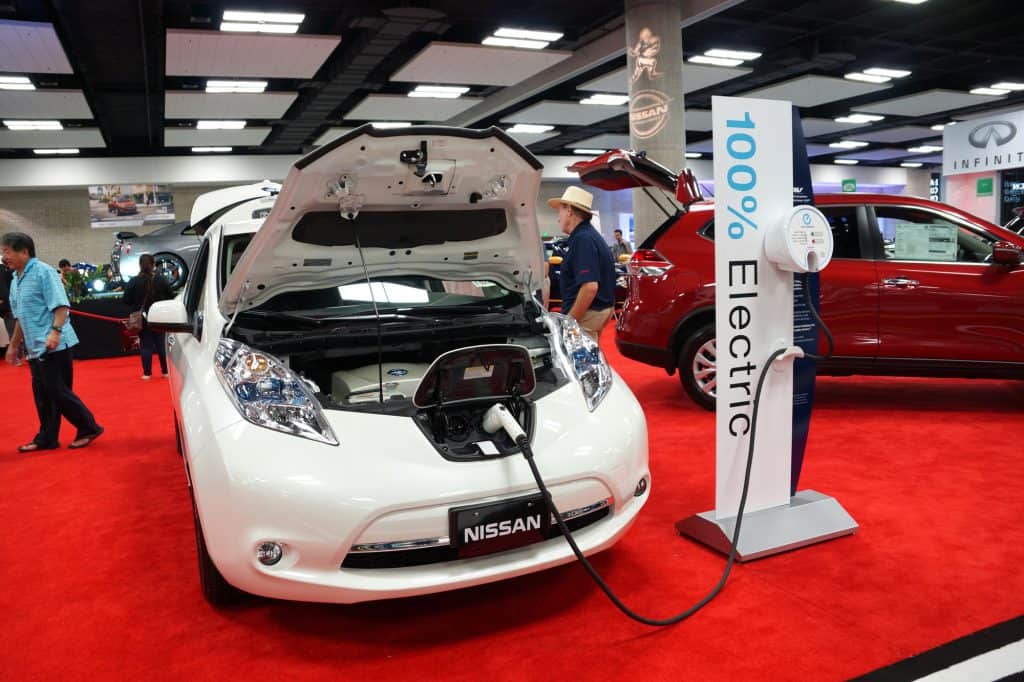
Nissan divides their annual maintenance schedule into two parts, handily called Schedule 1 Maintenance and Schedule 2 Maintenance. The former is noted as being for “more severe” items, and the latter for “less severe” items. These two categories are then spread across different distance-based maintenance lists. They are as follows:
At 7,500 miles or 6 months
Schedule 1: Tire rotation, inspection of axle, suspension, brake pads and rotors, drive shaft boots, front suspension ball joints, steering gear and linkage and steering linkage ball joints.
Schedule 2: Tire rotation.
At 15,000 miles or 12 months
Schedule 1: Replace brake fluid, replace in-cabin microfilter, tire rotation, inspection of all “7,500 miles” items, plus: brake lines and cables, charging port, EV battery usage report, and reduction gear oil.
Schedule 2: Tire rotation, replace in-cabin microfilter, inspection of brake lines and cables, brake pads and rotors, charging port, drive shaft boots, EV battery usage report and reduction gear oil.
At 22,500 miles or 18 months
Schedule 1: Tire rotation, inspection of all “7,500 miles items, plus: Nissan Intelligent Key battery.
Schedule 2: Tire rotation, inspection of Nissan Intelligent Key battery.
At 30,000 miles or 24 months
Schedule 1 & 2: Same as “15,000” miles plus: inspection of charging port sealing cap.
Further Milestones
- At 45,000 miles (36 months), it will be time to replace the Nissan Intelligent Key battery
And the patterns continue in these multiples of 7,500 miles. The good news is that if everything is ticking over well as it normally should, then maintenance will remain in the “less severe” area, and costs will be kept low over time.
What is the Annual Maintenance Cost on a Nissan Leaf?
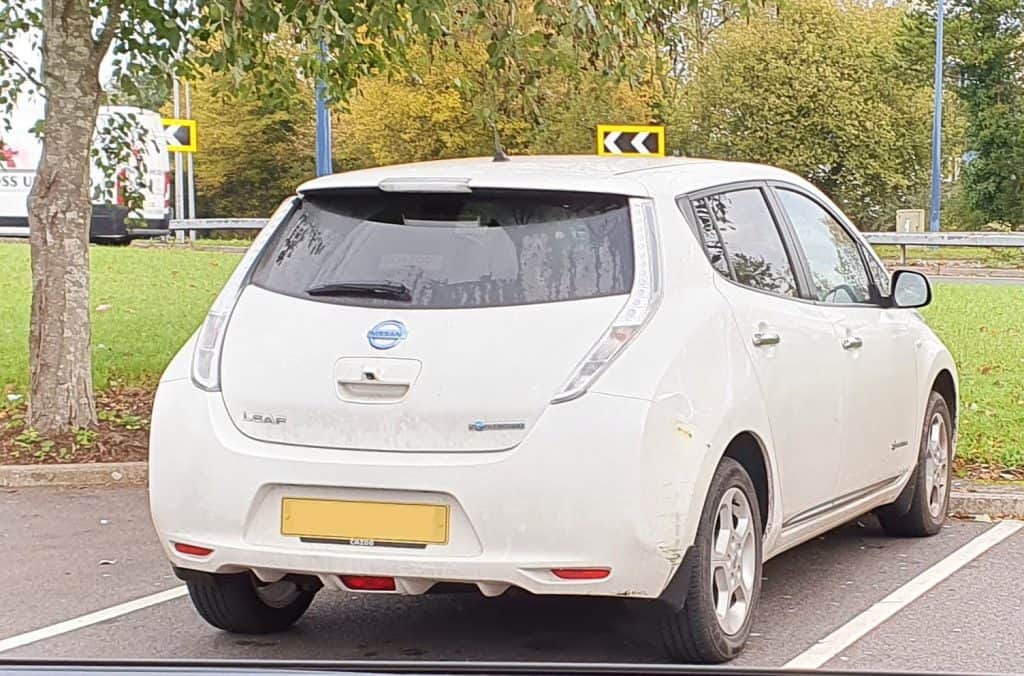
Like every other all-electric vehicle, the Nissan Leaf comes with a price tag considerably higher than a competing gasoline model. While you’d spend $31,000 for the entry-level Nissan Leaf model in 2021, you could instead spend $28,000 on a top-trim Toyota Corolla XSE Apex Edition sedan, which still achieves decent gas mileage, and comes with all kinds of extra comfort and drive features.
The purchase price of the Nissan Leaf does come down if you qualify for the full federal $7,500 grant, of course, but even when you apply that to the higher Leaf trims, the math isn’t in their favor.
The big ray of light that drivers do get from Nissan Leaf ownership are the mercifully low maintenance costs. According to 5-year ownership cost figures published on Edmunds, using the 2019 Nissan Leaf as an example, five years of maintenance on the Nissan Leaf only comes to $3,405. That breaks down as follows:
- Year 1: $248
- Year 2: $484
- Year 3: $492
- Year 4: $829
- Year 5: $1,352
RepairPal lists the average annual maintenance cost of a Nissan Leaf to be $748 overall, which while being above average for electric vehicles, is still below what it would cost for other vehicles. The 5-year maintenance cost of a 2019 Toyota Corolla, for instance, according to Edmunds comes much closer to $4,000. For the Nissan Leaf, the more curious thing is how you balance the above-average cost of $748 annually with the jaw-dropping infrequency that you even have to visit an auto shop with your Nissan Leaf.
According to RepairPal numbers, the frequency of visits to a repair shop for the Nissan Leaf is an amazing 0.2 times per year, which is below the average of 0.4 times per year for alternative fuel vehicles. Furthermore, the probability that a repair being severe or major is only 10 percent, which is about on target for EVs, and below the average of 12 percent for gasoline vehicles.
RepairPal offers further details on the average costs of common maintenance jobs. Below will give you an idea on what specific jobs would cost to perform on the Leaf:
| Ignition Switch Replacement | $147-170 |
| Parking Brake Shoe Replacement | $344-383 |
| Ambient Air Temperature Sensor Replacement | $112-147 |
| Emission Control System Inspection | $44-56 |
| A/C Evaporator Temperature Sensor Replacement | $151-176 |
| Anti-lock Brake System (ABS) Diagnosis | $81-102 |
| No Start Diagnosis | $88-111 |
| Suspension Shock or Strut Replacement | $433-477 |
| CV Boot Replacement | $338-396 |
| Strut Bearing Replacement | $175-211 |
Source: https://repairpal.com/nissan/leaf#tab-repair-costs
How Does Nissan Leaf Maintenance Compare to Other EVs?
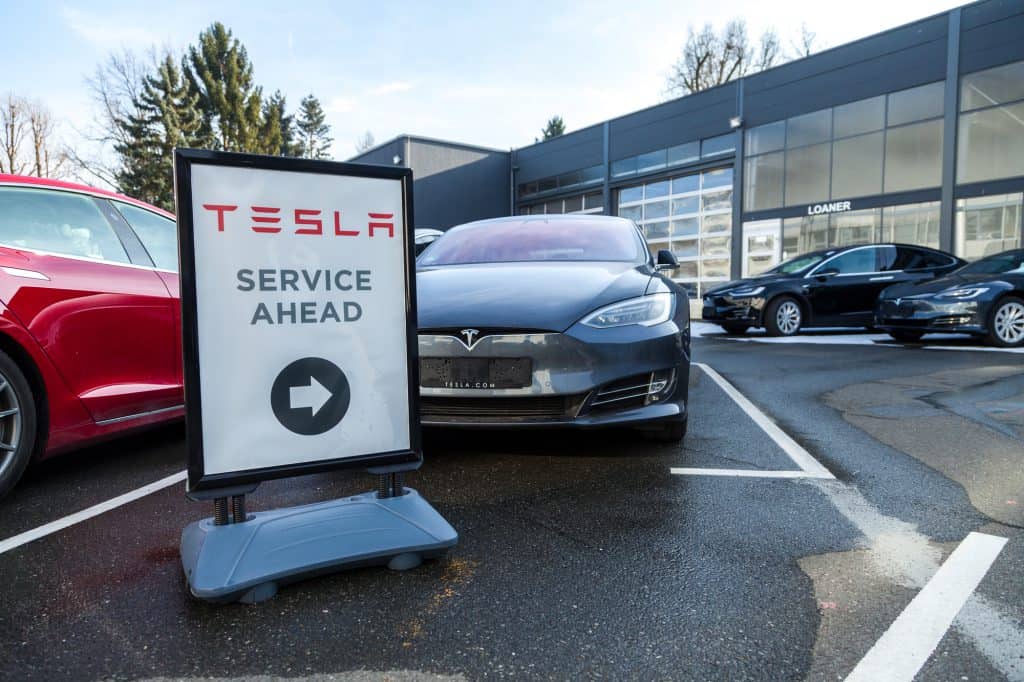
One of the Nissan Leaf’s biggest competitors is the Chevrolet Volt. RepairPal placed the Volt one rank higher than the Nissan Leaf overall. This most likely stems from the Chevy’s lower annual repair costs. When you look more closely, however, you see that the two do have some balance when you take the bigger picture into account.
First of all, both vehicles received an overall 4.0 out of 5.0 rating, putting them in a strong position. For the Chevrolet Volt, the main advantage is lower overall annual costs of maintenance, which according to RepairPal come to just $550, compared to $748 for the Leaf, as we mentioned above.
Conversely, however, the Volt only managed to score 0.44 on the repair shop visit frequency rating, which is considerably higher than the 0.2 achieved by the Nissan Leaf, and 0.04 above the average rating of 0.4 visits to the shop per year.
Finally, the two were fairly close on the chances of a problem being severe, but once again the Volt just managed to edge out the Leaf by achieving the average of a 9-percent chance, whereas the Leaf is 10 percent.
Is Every Item On The ‘Leaf Maintenance’ List Essential?
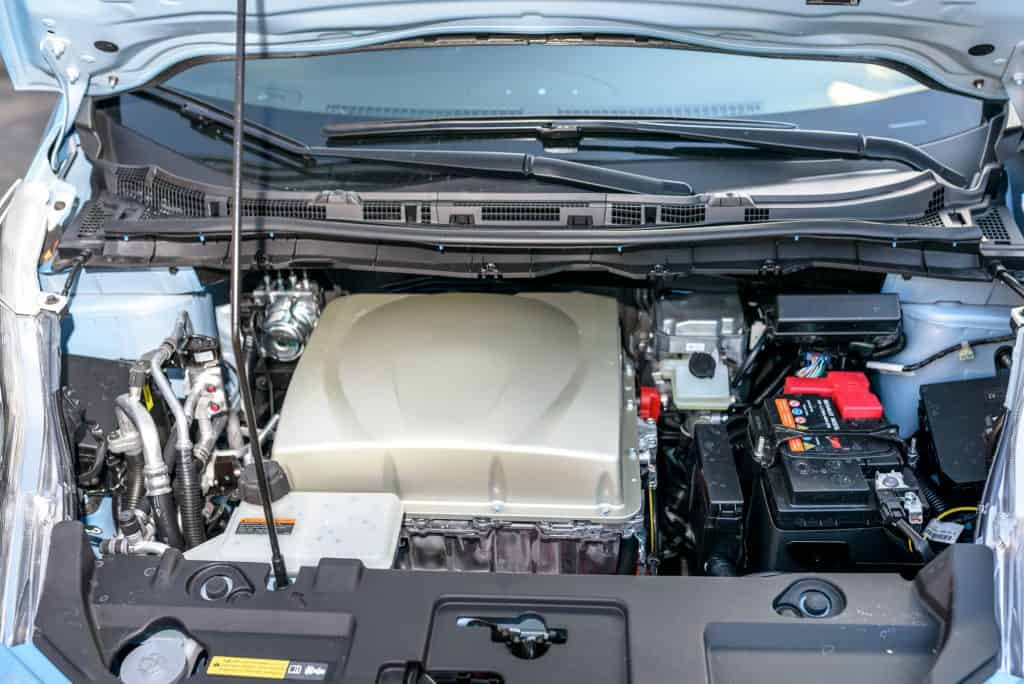
One slightly odd thing is the idea of replacing the brake fluid every 15,000 miles if you’re on schedule 1. In most cars, you wouldn’t have to change the brake fluid until you hit 60,000 miles. What makes the Nissan Leaf so in need of 4 times as many brake fluid changes? Are all these brake fluid changes necessary?
Nissan have explained that because brake fluid has a strong tendency to absorb moisture, it should therefore be replaced more regularly. This is especially true of any vehicle that relies on modern ABS technology and electronic stability control systems.
They further pointed out that because the Nissan Leaf makes greater use of its regenerative brake system (as opposed to regular hydraulic brake system), the moisture hat can gather on the brake lines is greater. This poses a bigger risk of rust, and timely changing of the brake fluid can help greatly with this issue.
With a brake fluid change costing as much as $300 per time, it’s a rather expensive way to ensure that your brakes might not rust. Given the importance of the brakes to overall safety, however, perhaps it’s not such a bad idea to follow Nissan’s guidance on this, especially when there are so few other regular expenses that come with Nissan Leaf maintenance.
One other curious addition to the Leaf schedule is the EV battery usage report. This has to be generated once annually, and can cost anywhere from $40 or less and up to $120, depending largely on your geographical location. The first two years are given to drivers for free, so you only start paying for this report from year 3 of ownership.
Some have questioned the validity and the necessity of this report and the expense it incurs because it seems more likely to be a method of data collection on the part of Nissan rather than as a genuine check on how the battery is doing. On the other hand, it does reveal the current battery capacity, which if fallen below 9 segments of 12 in Nissan’s measure system, entitles you to a battery replacement within a valid warranty period.
What Other Annual Costs Come with a Nissan Leaf?
The 5-year ownership cost figures on Edmunds give further insight into related costs each year you own and operate your Nissan Leaf.
Fuel
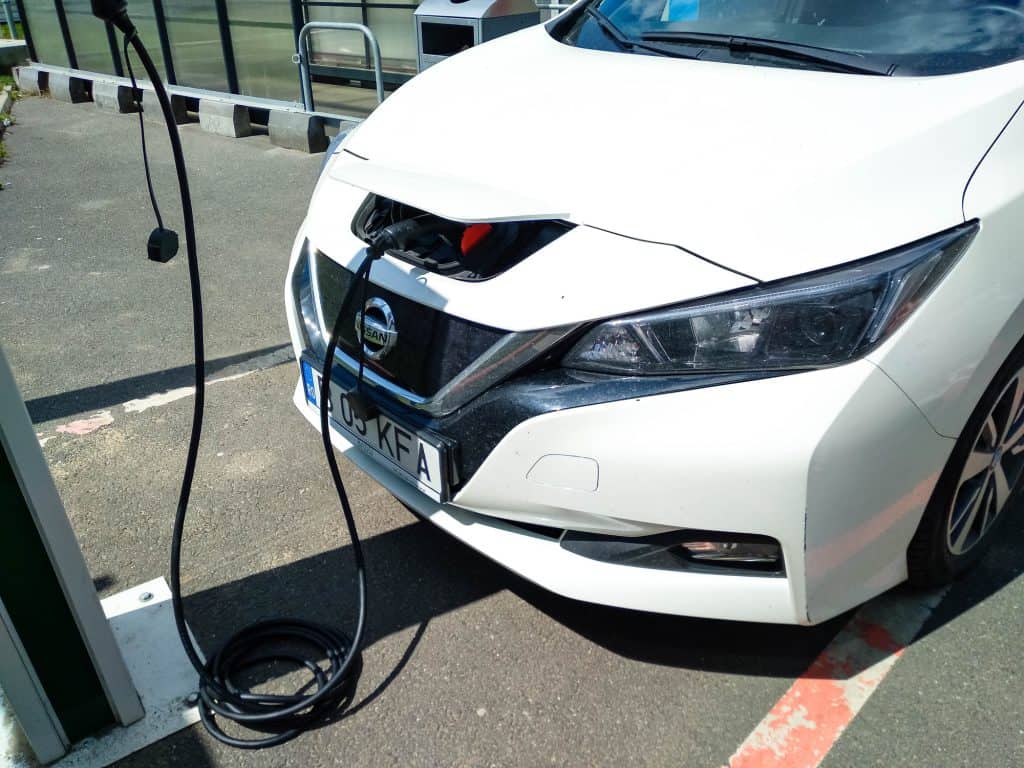
Fueling the Nissan Leaf is actually the process of electric charging. It’s not a hybrid car, after all, there are no gasoline costs whatsoever. Because the costs of energy are generally more stable than the international price of oil, upon which gas prices so heavily depend, the resulting prices to keep your Nissan Leaf charged are also relatively stable over a 5-year ownership period. According to Edmunds, it ranges from $909 in the first year up to $1,023 in the fifth year. To compare, a Toyota Corolla would cost $1,496 and $1,684 for fuel in those same two years.
Repairs
Besides regular maintenance on your Leaf, you also have to consider unexpected repairs. For the Leaf, the first two years are rated as $0 for repairs. Over the remaining three years, total repair costs only come to $773. This places the Nissan Leaf exactly on par with fellow Japanese Toyota and their Corolla sedan, which costs the same over the total 5-year period.
Depreciation
Unfortunately, where you will really get hit hard with a Nissan Leaf is in depreciation. The 2019 Leaf Hatchback SV used in the Edmunds figures we’ve been discussing loses an astonishing $12,413 of its initial value of $31,720 after year 1. After that, it continues to lose value each year from $2,700 to $3,000 annually.
This helps to explain why Nissan Leafs are frequently so inexpensive to purchase as pre-owned cars. Once again, to give some perspective, we compare that to the 2019 Toyota Corolla sedan, which after the first year only experiences $3,995 of depreciation. After that, each year only brings about $1,100 to $1,200 in further depreciation.
In five years, a Nissan Leaf depreciates by a total of $23,736. The Toyota Corolla only loses $8,571 in exactly the same period. That’s quite a stark difference right there, and shows where the real cost of ownership of the Nissan Leaf currently lies.
Conclusion
The Nissan Leaf, like any other EV, comes with some of its own unique costs. Some of those individual items, like a replacement battery, can make the Nissan Leaf appear very expensive or risky as maintenance goes. Reviews and information from a decade of Nissan Leaf ownership since 2011, however, as well as the data from Edmunds and RepairPal, show these fears to be unfounded. The various components of the Nissan Leaf tend to last very well, and maintenance costs may individually seem expensive, but are incredibly infrequent.
Overall, then, it makes the Nissan Leaf an affordable and dependable choice in the automotive world.
1 comment
What would you say about buying a warranty package and which ones would you recomnend